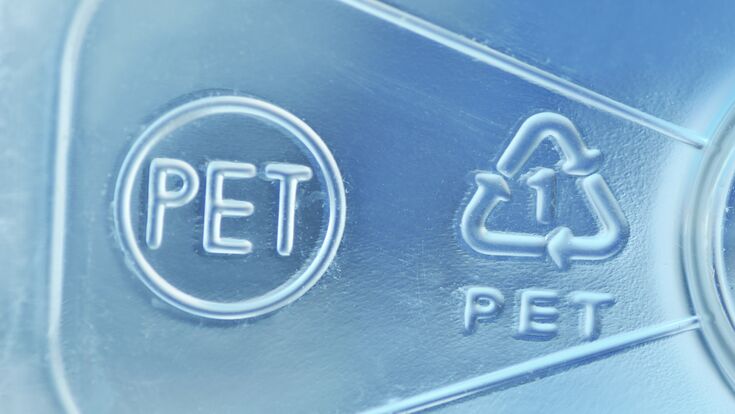Plastic Recycling : How can a chemical process help recycle PET waste?

At this point we all agree that plastic - as comfortable as the material makes our lives - is also a huge problem. Waste wise. No wonder that scientists all over the world are looking for ways to improve plastics recycling. Now researchers from US university Virginia Tech are exploring processes that could greatly increase the recycling of one of the world's most widely produced plastics: PET.
Graduate student Adam McNeeley and his advisor, Alumni Distinguished Professor Y.A. Liu, a member of the Macromolecules Innovation Institute, report on their investigation of chemical recycling processes that remove additives, impurities, and dyes from polyethylene terephthalate, commonly referred to as PET. Compared to current mechanical recycling processes, these processes may allow a higher percentage of the plastic to be recycled. The report is published in the 12th and 16th February issues of Industrial and Engineering Chemistry Research.
Related article: New study: Recycling and circularity of flexible plastics will continue to grow
Recycling an everyday plastic
PET is used in textiles, packaging, bottles and many other everyday items. Its current recycling is mainly mechanical, limited to clean recycled materials and mostly applied to plastic bottles. Plastic bottles account for only about 30 per cent of its end use, and the other 70 per cent is generally not considered for commercial recycling.
“The importance of this research is to identify and develop the cheapest and most efficient ways to recycle PET,” said McNeeley, who is studying chemical engineering, “There is a clear public desire to use products made from recycled materials, but if the recycled material costs a lot more than the virgin material, then people are less likely to buy the recycled material.”
Related article: Mechanical Recycling vs. Chemical Recycling: Rivals or Partners?

The two scientists investigated depolymerisation pathways using ethylene glycol, methanol or water to produce monomers that can be purified from additives, impurities and colourants in plastic waste and then converted back into recycled PET polymer. Prior to their study, most of the work that has been done on the chemical depolymerisation of PET has focused only on the chemical aspect. However, this research thoroughly assesses the thermodynamics, chemistry, purification, waste management, and sustainable design of PET depolymerisation processes.
The research team developed a complete simulation model of four depolymerisation processes, quantifying the mass and energy balances together with the energy requirements and carbon dioxide emissions, which provides a quantitative basis for industrial practitioners interested in depolymerisation to further develop sustainable depolymerisation processes.
“There are many different ways PET can be depolymerized and there are three that are being actively developed for commercial use, and we demonstrate how these different methods compare from a chemical processing standpoint,” McNeeley said.
Their findings also suggest key areas for researchers to focus on in order to meaningfully advance plastics recycling and make new recycling technologies commercially viable. “One of the greatest challenges with mechanical recycling is that certain dyes and impurities cannot be removed,” McNeely said. “A lot of effort must be made in the sorting and cleaning of waste PET that can be mechanically recycled. Converting the polymer to a monomer opens up a number of purification pathways and allows waste PET of theoretically any quality to be recycled. It also opens up the possibility to recycle other PET materials such as packaging and textiles, which actually comprise the majority of PET end use.”
PET in the focus of the industry
A number of companies are actively developing PET chemical recycling technologies, including Eastman Chemical Co. Eastman has built the first large-scale depolymerisation plant in the US using methanolysis in Kingsport, Tennessee.
“It is important that traditional chemical companies such as Eastman are working on this technology. These companies have access to large amounts of capital to build large-scale processes and have the know-how and experience to develop and operate processes efficiently and reliably, which is important for emerging recycling technologies to survive especially during turbulent market conditions,” McNeeley said.
“This is a timely and significant, thought-provoking study,” said Joseph Bays, the licensing technology manager of the company. “I am a fan of the heat integration innovation to save energy consumption, and some other innovative features of the sustainable design study."
Considering the global context of PET recycling, McNeeley said there should be a sense of urgency to such efforts. “Plastics are currently derived from fossil fuel-based feedstocks. Fluctuations in plastic prices and relatively low prices of fossil fuels tend to kill plastic recycling efforts because it is hard to make money,” he said. “There is a finite amount of fossil fuels and prices will eventually rise as the resource becomes more scarce. This is where plastic recycling efforts become reliably profitable, while preventing plastics from becoming extremely expensive as we transition to using non‑fossil fuel derived feedstocks”

